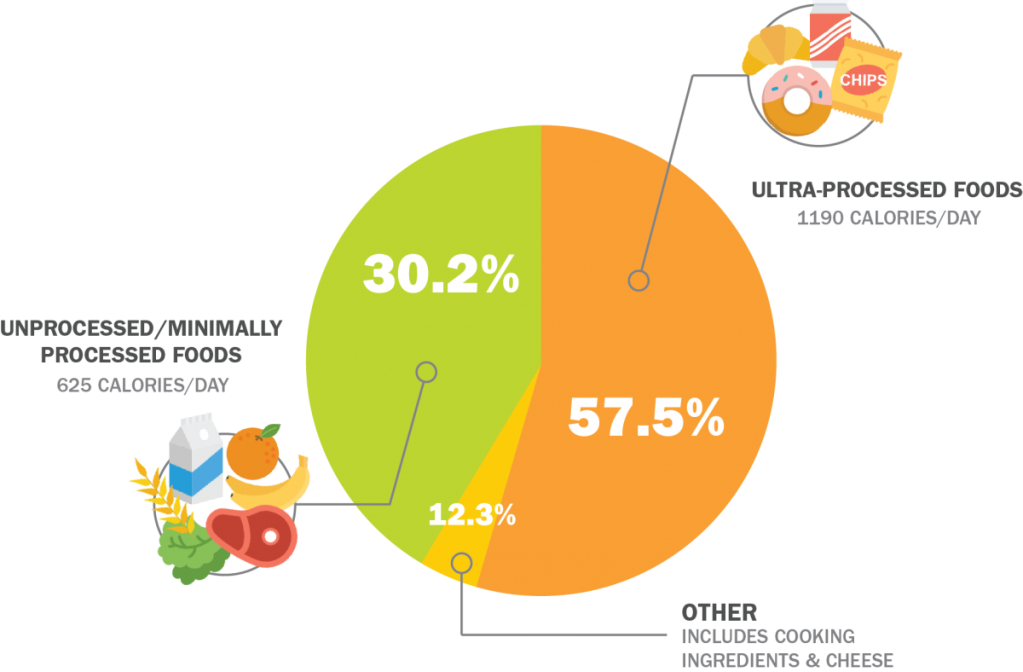This is not just another general “eat salad and completely avoid carbs” article. I’m tired of seeing generalized diet information that, to be brutally honest, is pointless and inapplicable to most people’s lives. This article is aimed to help the diabetic community focus on and prioritize what works.
Weight loss is science, not magic or voodoo or luck. There is a specific set of requirements needed to lose weight efficiently as a person with diabetes (type 1 or type 2). Yes, you may have heard of your friend’s cousin’s mother doing a no carb detox cleansing bath scrub to lose belly fat who lost 10 pounds, but I highly encourage you to check in with that person who does every fad diet possible in a few weeks or months. Chances are they gained the weight back and then some.
That’s because while some diets cause people to lose weight initially, they don’t employ the basic principles of continued effective weight loss. Whether it’s water weight loss, weight loss from severe calorie deficit, or avoidance of food, a lot of diets promise and sometimes produce acute results — that is temporary or short term results.
From helping hundreds of diabetics lose weight on social media, I was nicknamed the “T1D Fat Loss Coach” and now help people with all kinds of diabetes and chronic illnesses get on effective diets.
I have a 3 “E” rule for an effective diet before you continue on in this article. A diet must be all three of the following for you for it to be effective:
- Easy to adhere to long term
- Enjoyable or at least not miserable and affecting quality of life (socially or mood related)
- Effective in producing results long term (any diet change can produce short term results)
So, in deciding on a diet, make sure you have these rules in mind. These next five components of a diet will determine your success.
Optimal Weight Loss Blood Sugar
Blood sugar management is more important than exercise and diet combined for weight loss. Why? Because chasing blood sugars involves ruining your diet and training effectiveness.
You can’t optimally lose fat, build lean muscle, or get a healthier physique while mismanaging your blood sugars.
When your sugars are low, you are likely to (or at least more at risk to):
- Overeat to correct lows
- Overcompensate the overeating with medication that could lead to another low
- Experience another low in the next 24-48 hours (“lows beget lows”)
- Reduce intensity of exercise
- Experience increased hunger and cravings which can be hard to fight
When your blood sugars are high, you are likely to (or at least more at risk to):
- Overtreat with insulin which could lead to another low
- Reduce nutrient absorption necessary to increase or preserve lean muscle mass
- Decrease effectiveness of a workout
- Experience a false sense of scale weight loss when in reality, you could be losing lean tissue which means reducing your metabolic rate and storing more body fat
In order to improve your metabolic rate and your body’s fat burning capability/processes, blood sugar management has to be a priority. In order to reduce cravings and hypo and hyperglycemic events that negatively affect diet and training, blood sugar management must be a main priority that isn’t overlooked.
Talk to your endocrinologist and diabetes management team as you decide on what the best approach is in conjunction with your changing diet and exercise habits. Then, you can get into specifics on calories and the makeup of those calories for fat loss optimization.
Specifying Calorie Intake
In order for you to lose weight, you have to be in a calorie deficit — that means burning more calories than you take in. You can do this by eating less, burning more calories through activity, or, ideally, a combination of both.
But first, you have to determine what is the appropriate number of calories you should be intaking based on your personal stats and goals. But can’t I just eat “healthy” and lose weight? You can and leave it to chance but even if you eat healthy foods in the wrong quantities, you will gain weight.
There is no universal fix to an individual problem.
That means what works for me doesn’t optimally work for your mom or for you. Specificity is optimal. To figure out how many calories you need to consume, you can find any TDEE calculator online like this one. This determines your Total Daily Energy Expenditure, or the calories you need to eat to maintain your current weight.

Now if you want to lose weight, you need to be in a caloric deficit which means you need to eat less than what you expend daily. My personal, general rule of thumb is:
- If you want to lose 5 lbs/2 kg or less, subtract 250 calories from your TDEE
- If you want to lose 5-15 lbs/2-7 kg, subtract 500 calories from your TDEE
- If you want to lose over 20 lbs/10 kg, subtract up to 750 calories from your TDEE
This is a general rule that has helped hundreds of my type 1 and type 2 online weight loss clients lose between 5-60 lbs/2-25 kg but always be sure to consult your doctor before starting a new diet and training program.
Once you have your daily caloric limits, you can be more specific and determine your macronutrient goals.
Identifying Your Ideal Macro Balance
Calories determine weight change, but macronutrient balance determines the kind of weight change. Macronutrients are your proteins, carbohydrates, and fats.
- Protein has 4 calories per gram
- Carbs have 4 calories per gram
- Fat has 9 calories per gram
Why is macronutrient balance important? Take two people eating a 1500 calorie diet based on the advice above. Person A is eating 90% fat, 5% carbs, and 5% protein while person B is eating a balanced macronutrient diet of 35% protein, 30% carbs, and 35% fat. Who will get better results?
Person A is eating far too little protein and far too much fat. Higher protein diets are effective in helping people lose body fat, reduce hunger and cravings, and manage blood sugars. That little protein intake would increase risk of lean muscle loss which is the exact opposite goal. High protein diets are also proven to not be dangerous or harmful to the kidneys as long as there is no pre existing kidney damage.
That high of fat intake might make person A more hungry too as fat is more calorie dense meaning less total food intake. More hunger = more of a chance to fall off the diet when faced with opportunity to cheat.
The goal is to preserve or even build lean muscle while losing body fat. Losing muscle decreases your metabolic rate and lowers your body’s ability to burn fat. Keeping your protein around 30-40% of your total caloric intake is key for long term fat loss.
What about carbs?
Given that protein is 30-40%, carbs I leave up to my clients’ personal preference. Some people choose a moderate carb intake, some choose a lower carb intake, and some even choose to follow a ketogenic approach.
I personally don’t care as long as you are managing your sugars, eating the right protein amount, and hitting around your decided macronutrient intakes.
In terms of pure weight loss science, hundreds of studies have compared low-carb, high-fat diets to high-carb, low-fat diets and found no significant difference in weight loss when calories and protein are equated.
There may be some instances where clients with insulin resistance or hormonal issues (Type 2, PCOS, Hashimotos, post menopause, etc.) might be encouraged to be on the lower side of carb intake but, for the most part, it is a personal choice.
Carbs and fats usually have an inverse relationship — if one is higher the other is lower. If your protein intake is at 30% and you decide you want to do a moderate carb approach at 30% carbs, then you know your fat intake will be 40% (the remainder).
Some of my preferred macro percentages with my clients are:
- Low-carb: 40% protein/20% carbs/40% fat
- Moderate carb: 35% protein/30% carbs/35% fat
- Moderate carb, high activity level: 40% protein/30% carbs/30% fat
These are just a few of the many possibilities and strategies to elicit fat loss. Simply download a calorie counting app like My Fitness Pal to track these numbers discussed above.

Food Choices
It is not necessarily the choices of food that affect us as much as the quantities of food in terms of weight gain and weight loss, directly speaking. Indirectly, food choice can be a major indicator of adherence to a diet.
Eating processed foods is shown to decrease satiety (feeling of fullness), increase cravings, and increase guilt. These repercussions of not eating healthy can slow or even reverse progress. I like to take an 80/20 approach with my diabetic clientele and myself.
80% of the food eaten should be whole foods. 20% can be your personal indulgent. That means if you are alloted 1500 calories a day, 20%, or 300 calories, can come from your craving foods. I believe this helps people cheat within the diet so they stay on track for longer and get far better results than being extremely strict.
An interesting note, a Kansas state nutrition professor ate twinkies and protein shakes for 10 weeks and lost 27lbs/12kg and improved his metabolic profile in the process. He wanted to show that quantity of food is extremely important when it comes to weight loss. Obviously, I don’t recommend doing this and neither does he, so please don’t replicate his experiment.
Meal Timing & Frequency
One of the biggest myths in the dieting world is having to eat every two hours to “stoke the metabolic fire.” There is no metabolic fire or fire inside of your body — I promise. Daily macronutrient & caloric totals matter most not meal timing or frequency. When you add diabetes to the mix, that’s when these variables become more relevant.
Meal timing prior to cardio or exercise can determine if you are going to have a great workout or diabetic emergency. Both hypo- & hyperglycemia can ruin a workout so timing meals according to your activity level can greatly improve blood sugar management, which indirectly improves your ability to adhere to your diet and training.
Meal frequency is a personal preference but some people with diabetes find it easier to minimize glucose variability with smaller, more frequent meals. Ultimately, that is your decision. Whatever fits into your lifestyle best is what you should do.
Effective Weight Loss With Diabetes
Blood sugar management, proper caloric intake, and macronutrient balance will help you lose body fat long term, the right way. There are tons of advanced strategies I’ve used to help people with diabetes transform their bodies but all progress stems from these basic principles. Yes, it takes some work. Yes, you have to type some stuff and do some math. Yes, it takes conscious, daily effort just like diabetes management. But, in doing so, your body will thank you.









